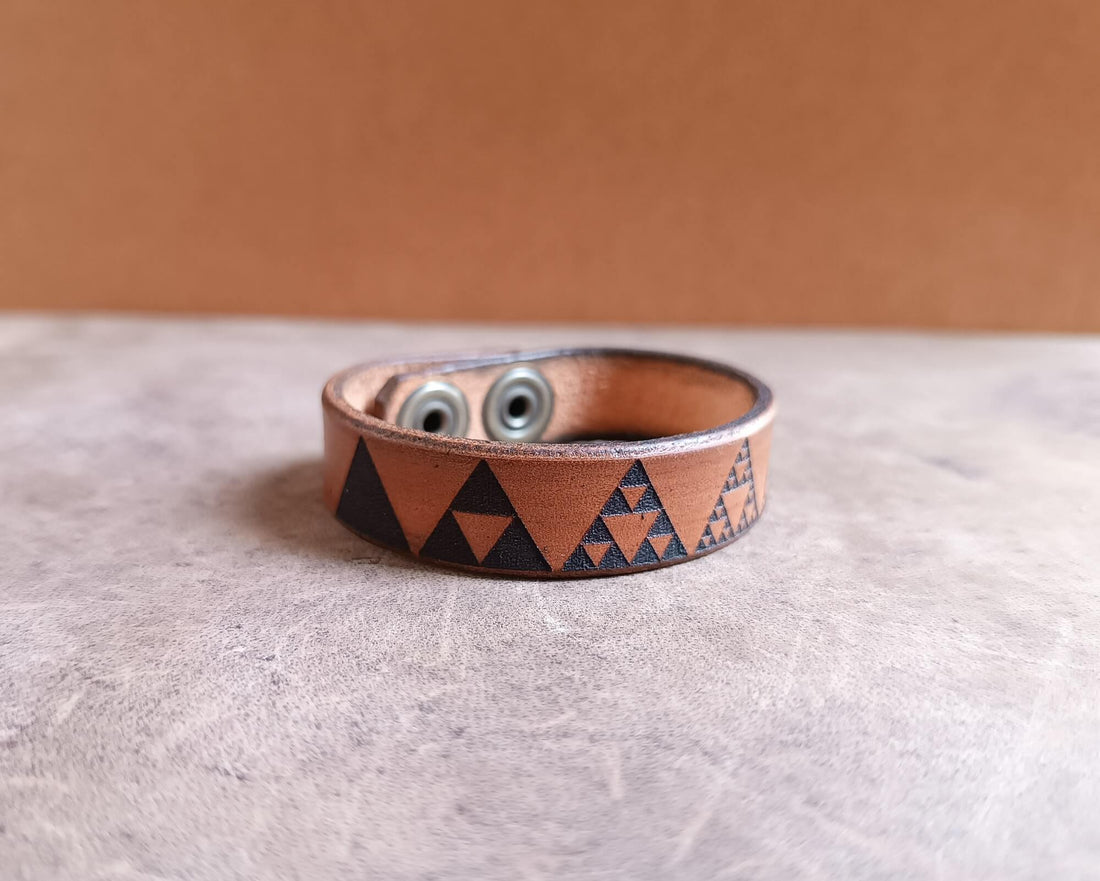
4 Nerdy Bracelets That Are Actually Ancient & Magical
Some symbols look like they belong in a math textbook. Others look like they came from an ancient temple.
And sometimes, they’re the same thing.
Let’s talk about four “nerdy” symbols that carry far older, deeper magic: codes of beauty, balance, and creation that have fascinated both scientists and mystics for centuries.
1. Fibonacci Sequence – Nature’s Hidden Code
Look closely at seashells, pinecones, sunflower seeds, or even the spirals of galaxies, and you’ll find it: the Fibonacci sequence - 1, 1, 2, 3, 5, 8, 13... Each number is the sum of the two before it, forming a pattern that shapes life itself.
This sequence isn’t just numbers, but nature’s way of keeping things in perfect proportion. Architects, artists, and even Da Vinci used it to design beauty that feels “right” without knowing why.
Why wear it?
To remember that growth has rhythm. Even when life looks chaotic, a hidden harmony unfolds beneath it all.
This bracelet says: seek the patterns! And trust them.

💡 Fun fact: The spiral of a nautilus shell grows following the Fibonacci ratio almost perfectly, so does the swirl of a hurricane and the arms of our Milky Way. Nature really is the original mathematician.
2. Vesica Piscis – The Portal of Possibility
Two circles overlap, and in the middle forms an almond-shaped space: the Vesica Piscis.
This simple shape is one of the oldest sacred symbols known to humankind. It appears in early Christian art, in temples across Asia, and in the blueprints of Gothic cathedrals.
Its meaning? Creation. It’s where duality becomes unity, where heaven meets earth, spirit meets matter, one meets the other.
Why wear it?
To remember that magic happens in the overlap: that your strength lives in the spaces between worlds, between what is and what’s becoming.
💡 Fun fact: The fish-shaped Vesica Piscis is the origin of the Christian ichthys symbol (“Jesus fish”). It’s also the geometrical seed that gives birth to the Flower of Life.
3. Penrose Triangle – The Impossible Made Possible
At first glance, it’s impossible: a triangle that can’t exist in three dimensions. Yet there it is, teasing the eye and defying reason.
The Penrose Triangle is a paradox turned into art. It was first drawn by mathematician Roger Penrose and later made famous by M.C. Escher, whose art blurred the lines between logic and illusion.
Why wear it?
Because life isn’t linear. What seems impossible can take shape if you shift your perspective.
This bracelet whispers: the rules are just suggestions.
💡 Fun fact: Escher called his works inspired by the Penrose shape “impossible realities.” The triangle became a favorite among mathematicians, psychologists, and game designers alike (think Portal or Monument Valley)
4. Sierpinski Triangle – Order in Infinity
At first, it’s just a triangle. But zoom in and you’ll find smaller triangles inside, repeating endlessly. That’s the beauty of a fractal: self-similarity at every scale.
The Sierpinski Triangle was first described by Polish mathematician Wacław Sierpiński in 1915, yet its pattern echoes ancient philosophies: “as above, so below.” It’s a symbol of infinite potential, repeating cycles, and hidden order.
Why wear it?
To remind yourself that everything you do - every act, word, or creation - ripples outward. The micro mirrors the macro.
💡 Fun fact: Fractals like the Sierpinski pattern are now used to model natural phenomena: from snowflakes to mountain ranges and to neuron networks in the human brain.
The Hidden Thread
These nerdy-yet-ancient symbols prove one thing: wisdom wears many disguises.
Math, art, magic, and mystery aren’t separate, but threads in the same tapestry.
Wearing them isn’t about style alone or alternative fashion. It’s about carrying a secret code, a reminder that logic and spirit have always been in conversation.
Let your bracelet be your paradox, your portal, your hidden spiral!
After all, the nerds were always the mystics in disguise.
[Related: 8 Game-Inspired Bracelets that double as Life Leassons]




